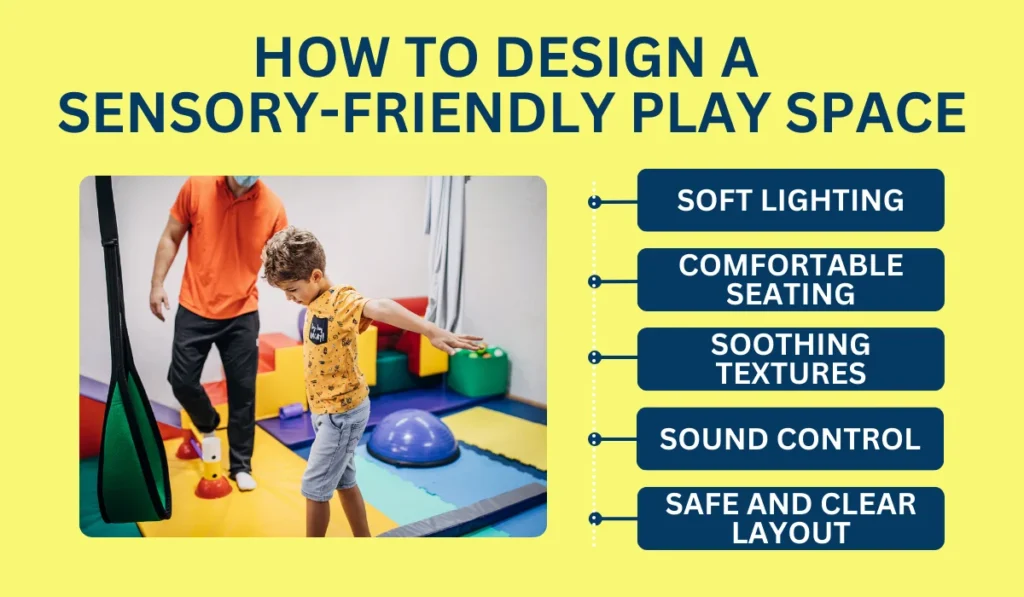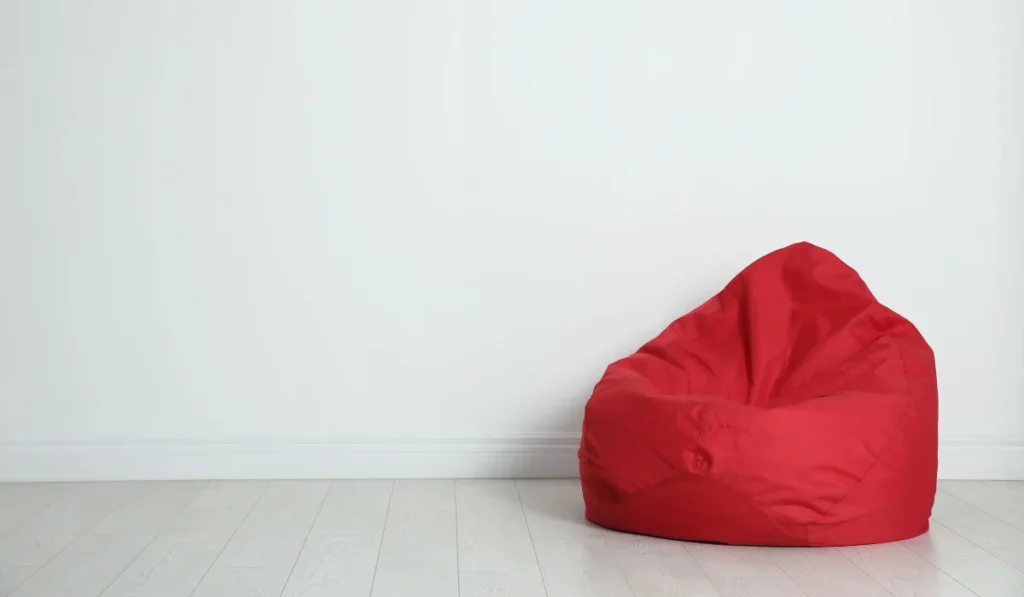A sensory-friendly play space can make a big difference for children with autism, ADHD, or sensory challenges. Some feel best in a quiet, calming space, while others need hands-on activities to stay engaged. So the right setup should match their needs, offering a balance of comfort, movement, and sensory input.
In this guide, we’ll cover how to choose the right spot, design the space, and pick sensory toys that help your child feel at ease and engaged.
Key Takeaways
- Some kids need calm, quiet spaces, while others need movement and hands-on play. A sensory-friendly space helps balance their needs.
- Pick a quiet, low-traffic spot with minimal distractions. Keep sensory tools within reach and allow space for movement.
- Use soft lighting, cozy seating, and soothing textures. Keep the layout clear and clutter-free for comfort and safety.
- Add a mix of calming, stimulating, and multisensory tools. Weighted blankets, swings, and interactive lights support focus and regulation.
Understand Their Sensory Needs
Kids with autism, ADHD, or sensory challenges experience the world differently. Some react strongly to sights, sounds, and textures, while others seek more sensory input to feel balanced. This is called sensory processing, and when it affects daily life, it’s known as a sensory processing disorder.
You might notice this in small ways. A child who covers their ears, avoids certain fabrics, or gets upset in busy spaces may be taking in too much stimuli at once. Another who fidgets, jumps, or seeks tight hugs may be looking for more sensory experiences to stay engaged.
These differences shape how they play, learn, and interact with their surroundings. That’s why a sensory-friendly play space can help. It creates a place that feels right for them, whether they need a quiet retreat, an active space, or a mix of both.
Choose the Right Location
Where you set up a sensory-friendly play space can shape how well it works. A good spot should feel safe, comfortable, and easy to use while reducing distractions. Some areas in the home naturally work better than others, and small adjustments can make a big difference.
So let’s go over how to pick the right space, limit distractions, and make the area accessible.
Select a Suitable Space
Look for an area that matches your child’s needs. A spare bedroom, a corner of the living room, or a section of a playroom can all work well. If your child needs a calm space, choose a quieter area away from TVs, loud appliances, or busy walkways. If they seek sensory input, a more open area where they can move freely may be better.
Reduce External Distractions
Too much noise, clutter, or movement can be overwhelming, so keeping the space simple and controlled is key. Soft rugs or foam mats can help reduce sound, and curtains or room dividers can create a more secluded feel.
If possible, set up the space away from high-traffic areas to limit distractions.
Make It Accessible
The play space should be easy for your child to enter, exit, and use on their own. Keep sensory toys and calming tools within reach so they can grab what they need without frustration. If they use a wheelchair, walker, or other mobility aids, make sure there’s enough space to move freely.
How to Design a Sensory-Friendly Play Space

Choosing the right location is a big first step, but how you set up the space matters just as much. A well-designed sensory area isn’t just about where it is. It’s about how it feels, how it functions, and how well it supports your child’s needs.
So let’s review the five key factors to focus on when designing a sensory-friendly play space.
1. Soft Lighting

Bright, overhead lights can be harsh for children with sensory sensitivities. Instead, go for soft, warm lighting with dimmable lamps, string lights, or natural light. Projectors or bubble tubes can also create a soothing effect while providing gentle visual stimulation.
2. Comfortable Seating

A cozy space encourages relaxation and focus. Bean bags, floor cushions, or weighted blankets provide deep pressure that can help with self-regulation. If your child prefers movement, a rocking chair or sensory swing can be a great addition.
3. Soothing Textures

Different textures can offer calming or engaging sensory input. Consider adding soft rugs, plush pillows, or textured wall panels to create a more inviting space. Sensory bins with putty, kinetic sand, or stretchy fabric can also help kids explore textures in a controlled way.
4. Sound Control
Too much noise can be overwhelming, so reducing auditory distractions is important. Try noise-canceling headphones, a white noise machine, or soft background music to help create a calming environment. If outside noise is an issue, rugs, curtains, or acoustic panels can help absorb sound.
5. Safe and Clear Layout
A cluttered space can feel overwhelming and lead to frustration. Keep the area open and organized, with clear paths for movement. Storage bins or shelves can help keep sensory toys within reach but out of the way.
If your child is active, make sure the space is free of tripping hazards and has soft surfaces in commonly used areas. Room and home safety is a necessary consideration.
Sensory Elements to Consider
With the right space and setup in place, the next step is choosing sensory tools that fit your child’s needs. A good play space includes a mix of calming, stimulating, and interactive elements to support focus, movement, and self-regulation.
Here are some key sensory elements to help you build a space that works.
| Calming | Weighted blankets: Deep pressure for relaxation. | Fidget toys: Helps with focus and self-regulation. | Sensory bottles: Soothing visual input. |
| Stimulating | Sensory swings: Supports movement and balance. | Climbing walls: Builds strength and coordination. | Textured paths: Engages touch and motor skills. |
| Creativity | Art supplies: Encourages creativity and fine motor control. | Kinetic sand: Moldable texture for sensory play. | Water play tables: Stimulates touch, sight, and movement. |
| Multisensory | Aromatherapy diffusers: Uses scent for relaxation or focus. | Tactile panels: Provides different textures to explore. | Interactive lights: Creates a calming or engaging atmosphere. |
How a Home Health Care Provider Can Help Your Child at Home
A sensory-friendly play space is a great start, but having the right space isn’t always enough. Some children need help learning how to use it, while others may struggle with sensory overload, routines, or self-regulation.
After all, even the best setup can feel overwhelming without guidance and structure, making it harder for kids to get the most out of their play area.
This is where a home health care provider (e.g., an occupational therapist or specialized caregiver) can help. They offer personalized strategies, hands-on support, and caregiver guidance to ensure your child fully benefits from their sensory space.
1. Personalized Sensory Strategies
Every child interacts with sensory input in their own way. A provider can observe how they engage with the space, recommend specific tools and activities, and make adjustments as needed.
They may introduce deep pressure exercises, fine motor tasks, or movement-based strategies to support self-regulation and sensory processing.
2. Building Independence
A well-designed play space should help your child feel in control of their environment. A provider can guide them in choosing sensory tools, following simple routines, and managing sensory overload.
Over time, this can improve problem-solving, social skills, and emotional regulation, making daily life easier.
3. Support for Caregivers
Parents play a key role in their child’s sensory development, but it’s not always clear what works best. A provider can offer hands-on training, practical strategies, and personalized advice to help caregivers create a more effective play space.
They can also help spot early signs of sensory overload and suggest ways to help kids reset and re-engage when needed. With the right support and setup, your child’s sensory-friendly play space can become more than just a room. It can be a place where they feel safe, confident, and free to explore.
And remember, if you need help creating or optimizing this space, home care services can provide expert guidance and make the process easier.